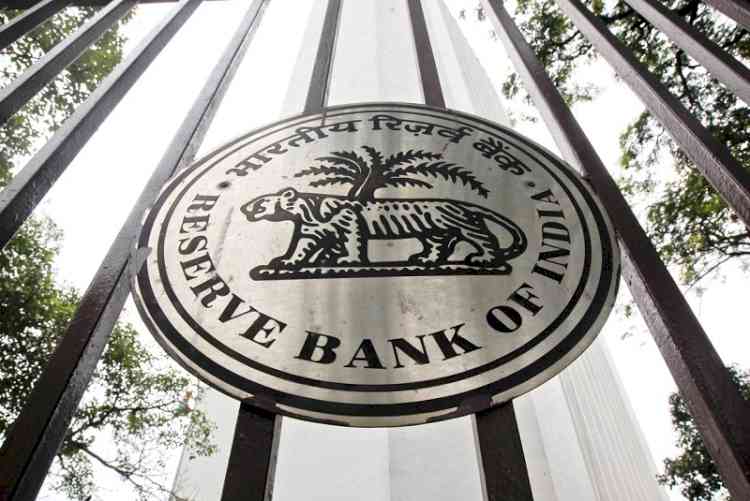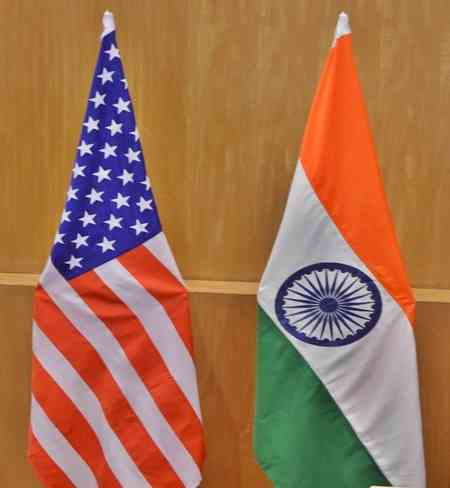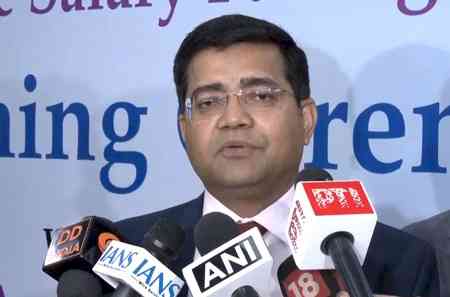RBI hikes repo rate by 50 basis points to 5.40%
The monetary policy committee (MPC) of the Reserve Bank of India (RBI) has unanimously voted to increase the policy repo rate by 50 basis points to 5.40 per cent. Consequently, the Standing Deposit Facility (SDF) rate adjusted to 5.15 per cent and Marginal Standing Facility (MSF) rate and the Bank Rate adjusted to 5.65 per cent.

Mumbai, Aug 5 (IANS) The monetary policy committee (MPC) of the Reserve Bank of India (RBI) has unanimously voted to increase the policy repo rate by 50 basis points to 5.40 per cent. Consequently, the Standing Deposit Facility (SDF) rate adjusted to 5.15 per cent and Marginal Standing Facility (MSF) rate and the Bank Rate adjusted to 5.65 per cent.
This is the third consecutive rate hike by the central bank in this year after a 40 basis points hike in May and 50 basis points in June. With today's hike, the RBI has increased the rate by 140 basis points since May this year.
All members of the MPC voted to remain focused on withdrawal of accommodation to ensure that inflation remains within the target going forward, while supporting growth. Prof. Jayanth R. Varma expressed reservations on this part of the resolution.
Assessment of Growth and Inflation:
Domestic economic activity is exhibiting signs of broadening. The monsoon and the water reservoirs levels are above normal. On the demand front, the urban demand is showing improvement, however, rural demand indicators are giving mixed signs. Investment activity is also picking up as capital goods production recorded double digits growth for the second consecutive month in May and import of capital goods also witnessed robust growth in June.
Whereas, on the other hand, the bank credit growth has accelerated to 14 per cent as on July 15, 2022, from 5.4 per cent in a year ago period. Incoming data of corporates for Q1 indicate that sales and demand conditions and profitability of the manufacturing sector remained buoyant.
The survey by the RBI, manufacturing firms expect sustained improvement in production volumes and new orders in Q2FY23, which is likely to sustain through Q4. At the same time, the domestic economy faces headwinds from global forces - geopolitical tensions, rising global financial market volatility, tightening global financial conditions, and global recession risks.
The central bank has retained its projection for GDP at 7.2 per cent, with Q1 at 16.2 per cent, Q2 at 6.2 per cent, Q3 at 4.1 per cent, and Q4 at 4.0 per cent, with risks broadly balanced. Real GDp growth for Q1FY24 is projected at 6.7 per cent.
On the inflation front, projections for the 2022-23 remain unchanged at 6.7 per cent, with Q2 at 7.1 per cent, Q3 at 6.4 per cent and Q4 at 5.8 per cent, with risks evenly balanced. CPI Inflation for Q1FY24 is projected at 5.0 per cent.
In June 2022, the headline inflation remained at or above the upper tolerance band of the RBI for the sixth consecutive month. While looking ahead the inflation trajectory continues to be heavily contingent upon the evolving geopolitical developments, international commodity market dynamics, global financial market developments and spatial and temporal distribution of the south-west monsoon.
Incidence of unseasonal and excessive rainfall, if any, can impact food prices, especially vegetable prices. Greater transmission of input cost pressures to selling prices across manufacturing and services sectors may also create fresh price pressure.
Liquidity and Financial Market Conditions:
The introduction of SDF resulted in withdrawal of accommodation by 130 basis points. With this, the yields on Treasury bills, commercial papers, certificates of deposit and other short-term debt instruments also rose.
The liquidity in the banking system has also moderated in the banking system from Rs 3.8 lakh crore from Rs 6.7 lakh crore during April-May. The sharp moderation in surplus liquidity from July 20 was mainly due to account of tax and capital outflows, resulting in money market rates firming up above the repo rate.
During the current financial year, the US dollar index has appreciated by 8 per cent against a basket of major currencies due to which the Indian Rupee depreciated 4.7 per cent. "Market interventions by the RBI have helped in containing volatility and ensuring orderly movement of the rupee. We remain watchful and focused on maintaining stability of the Indian rupee," the Governor said in the statement.


 IANS
IANS 










